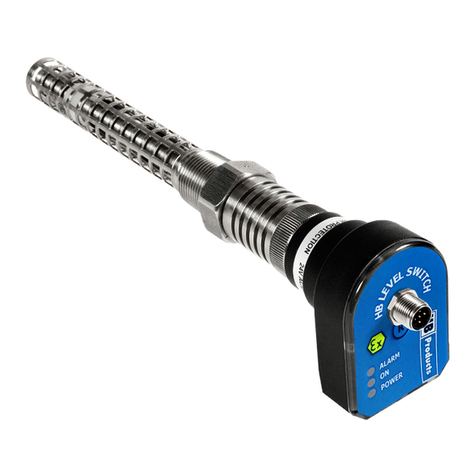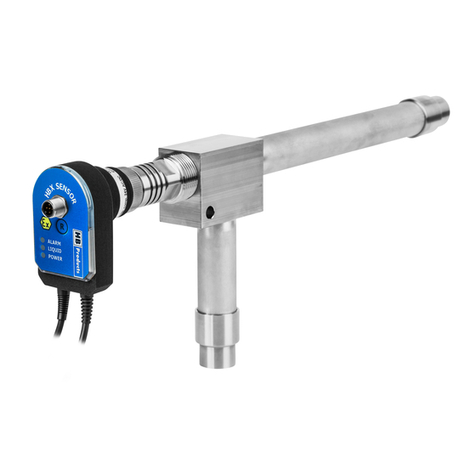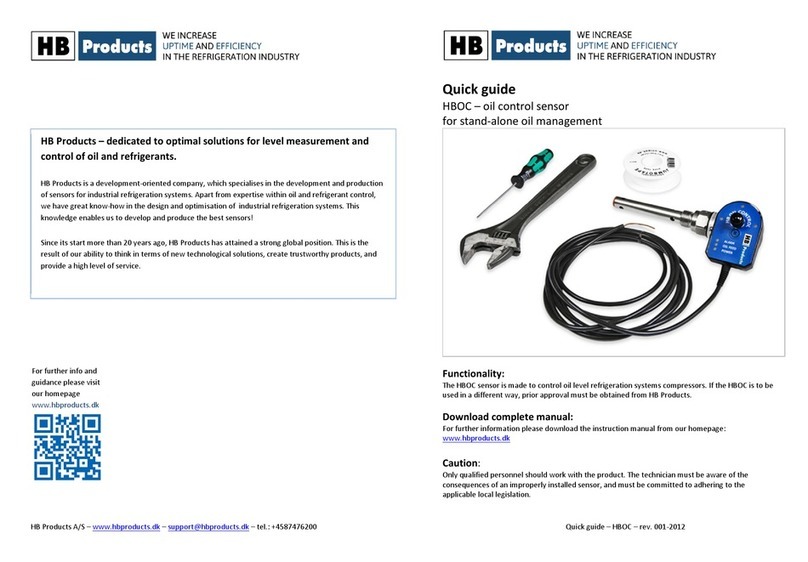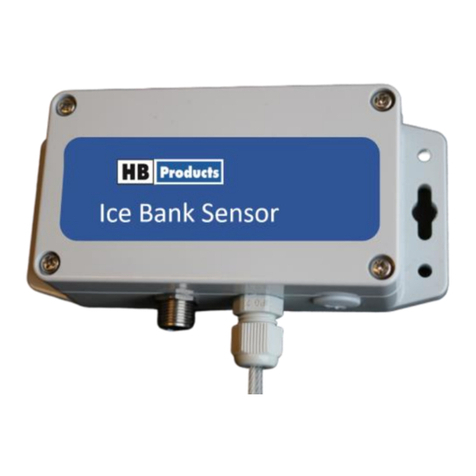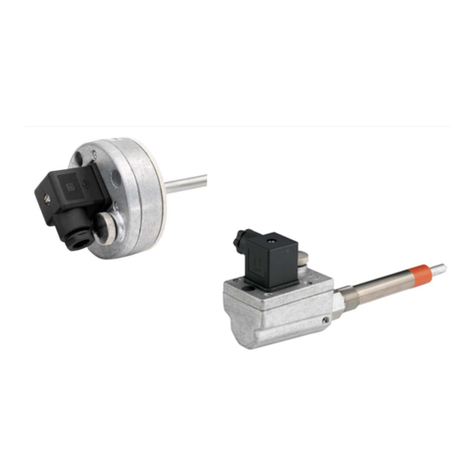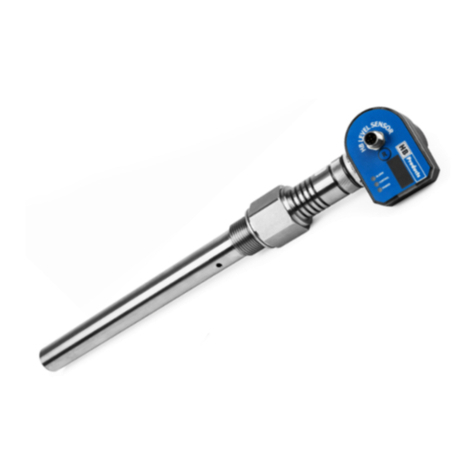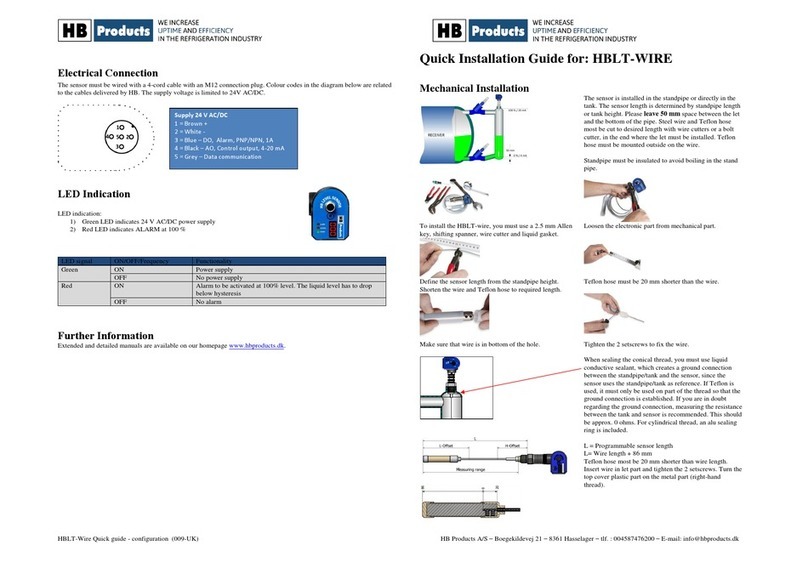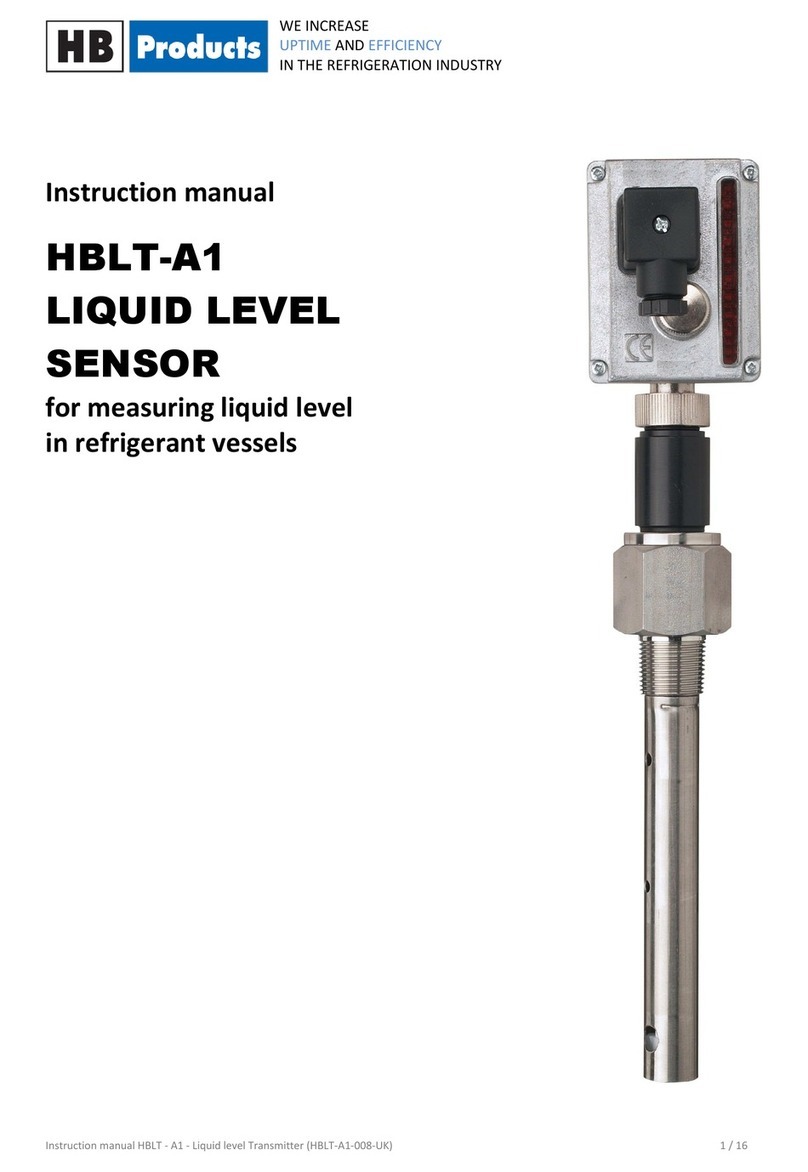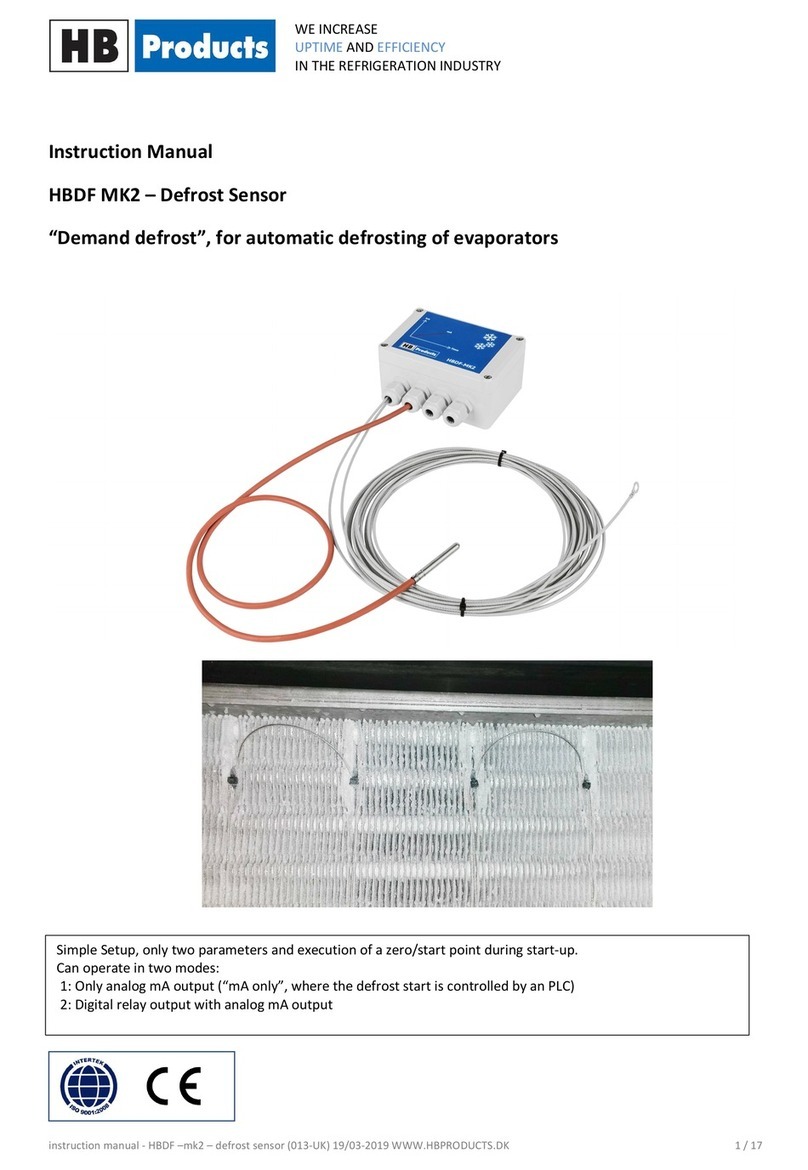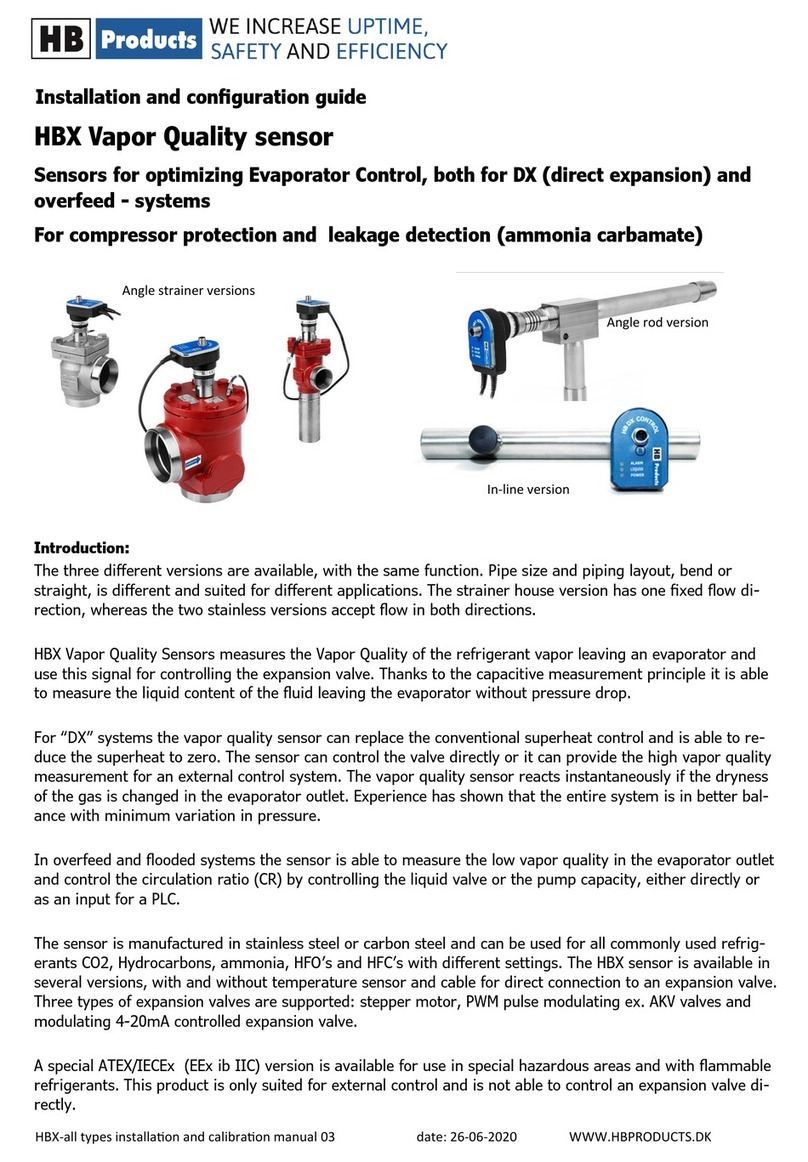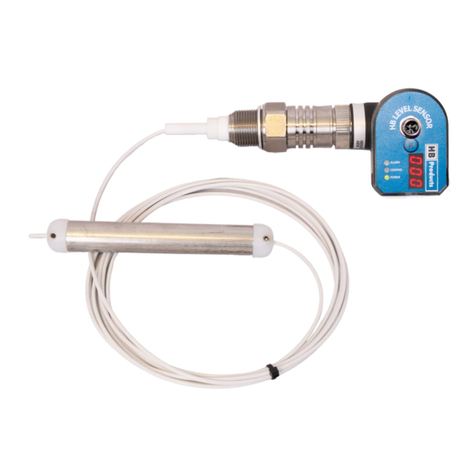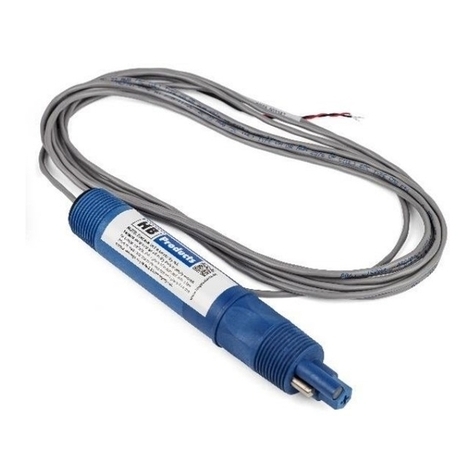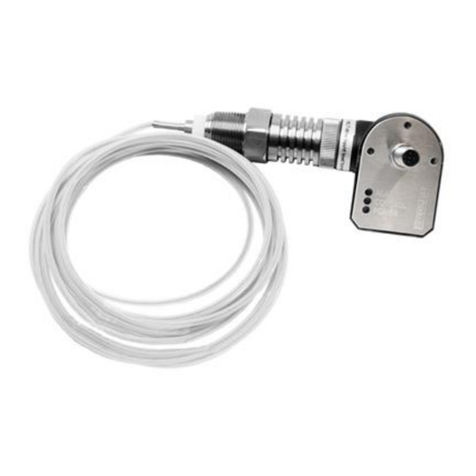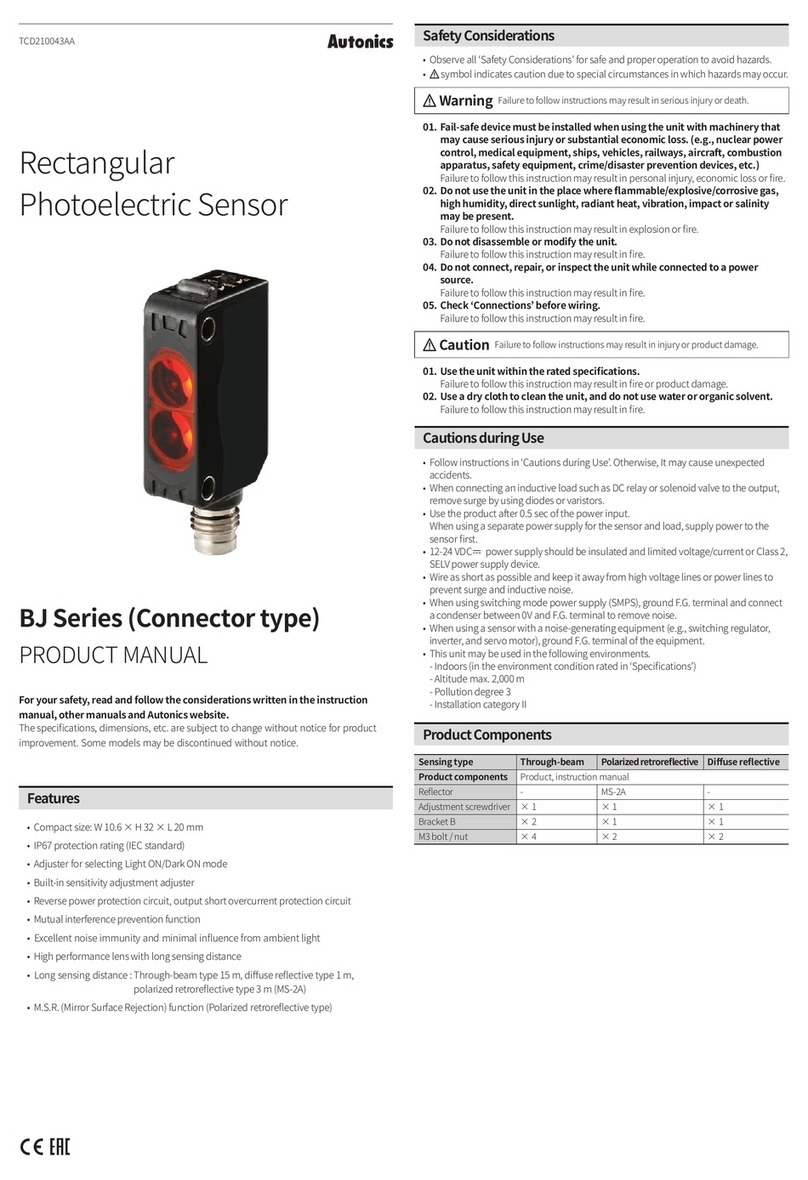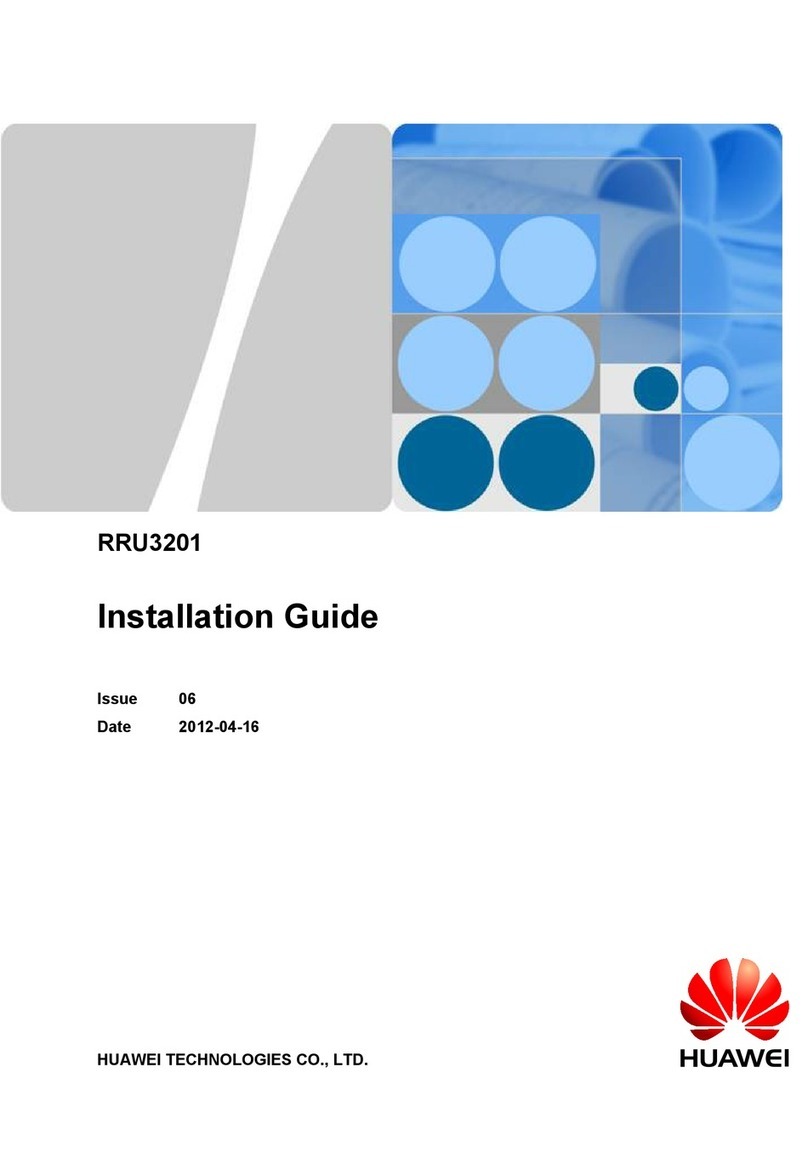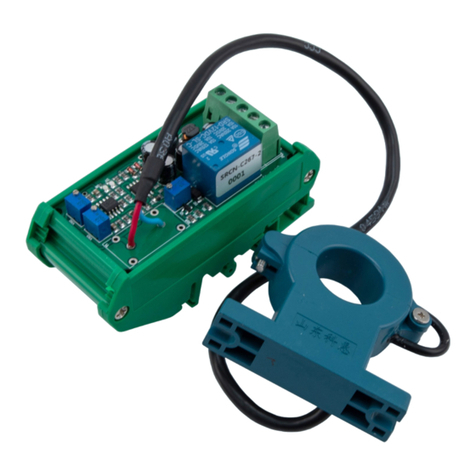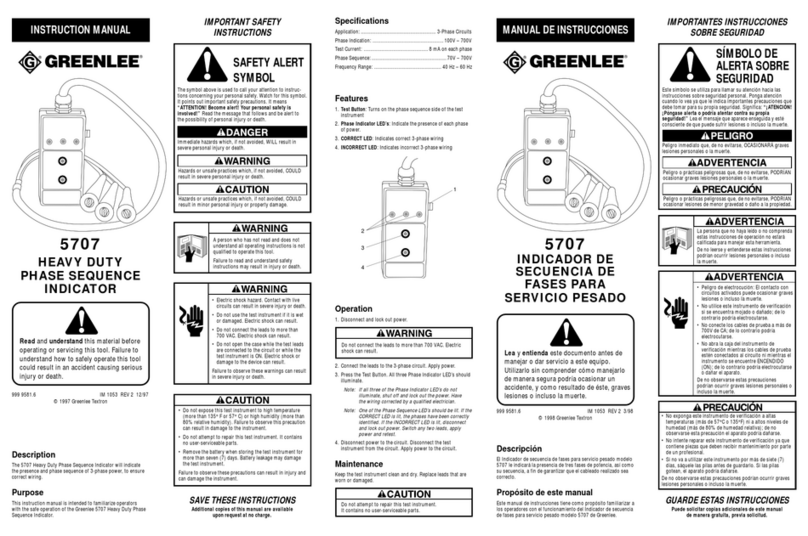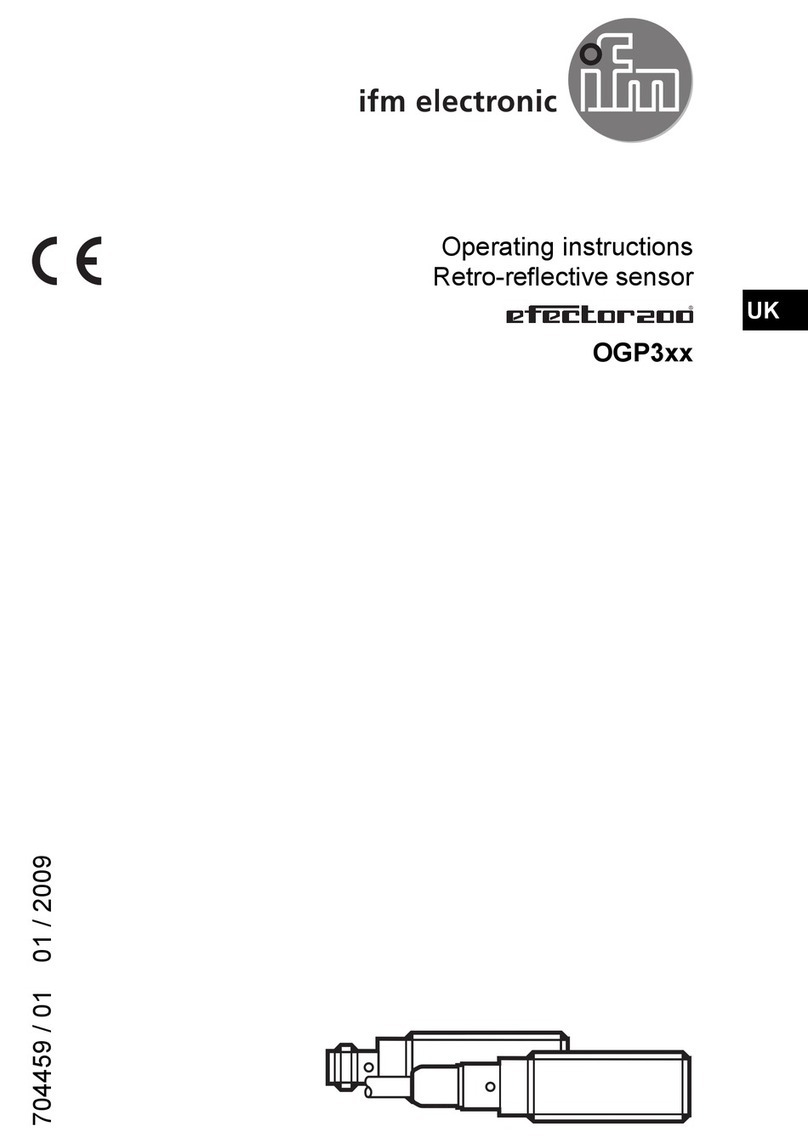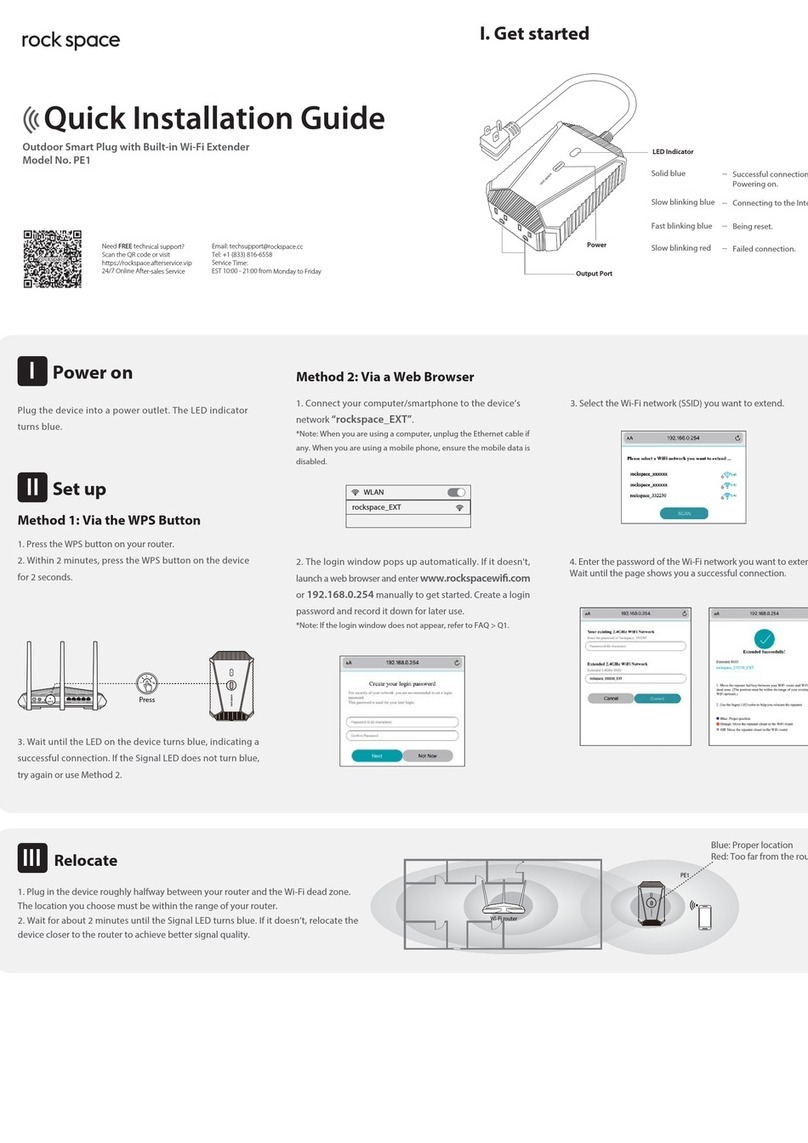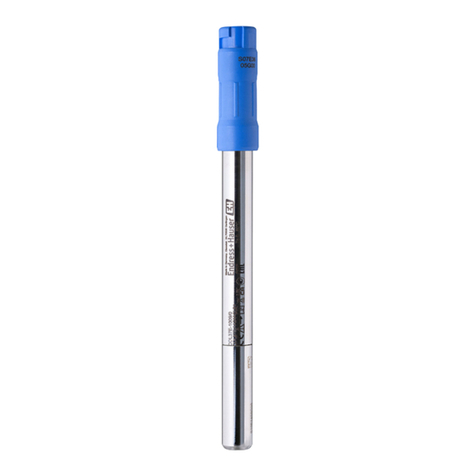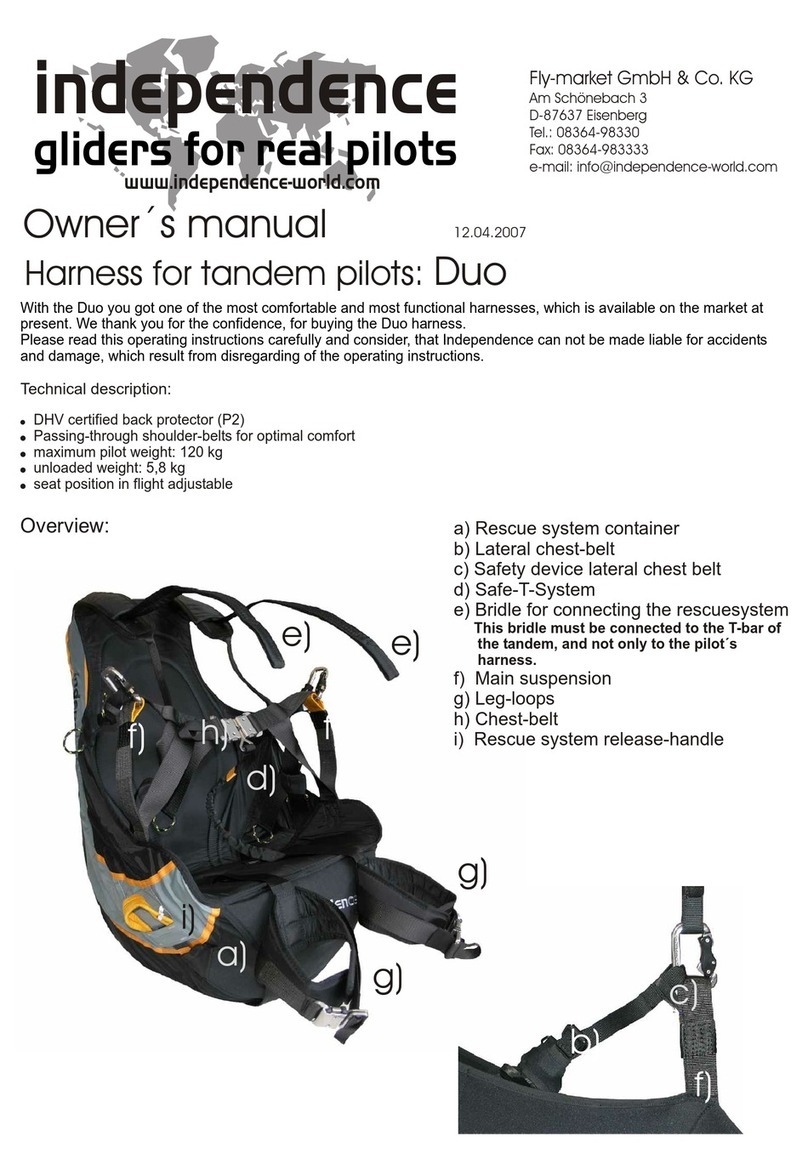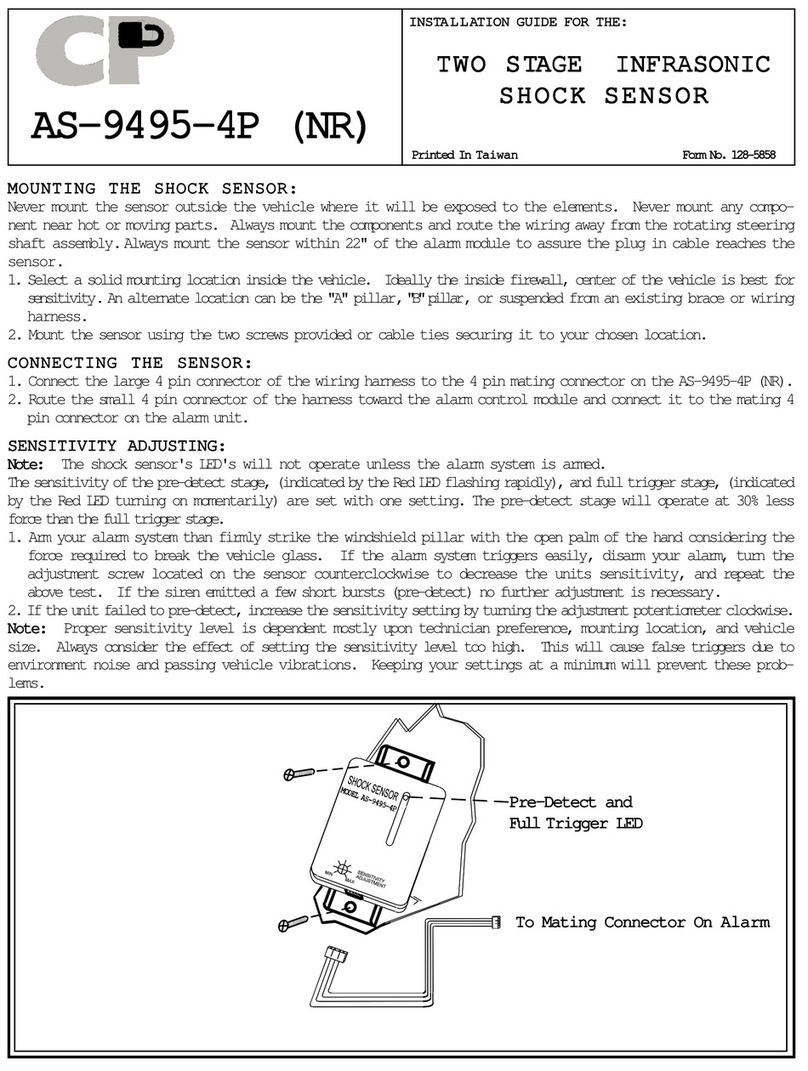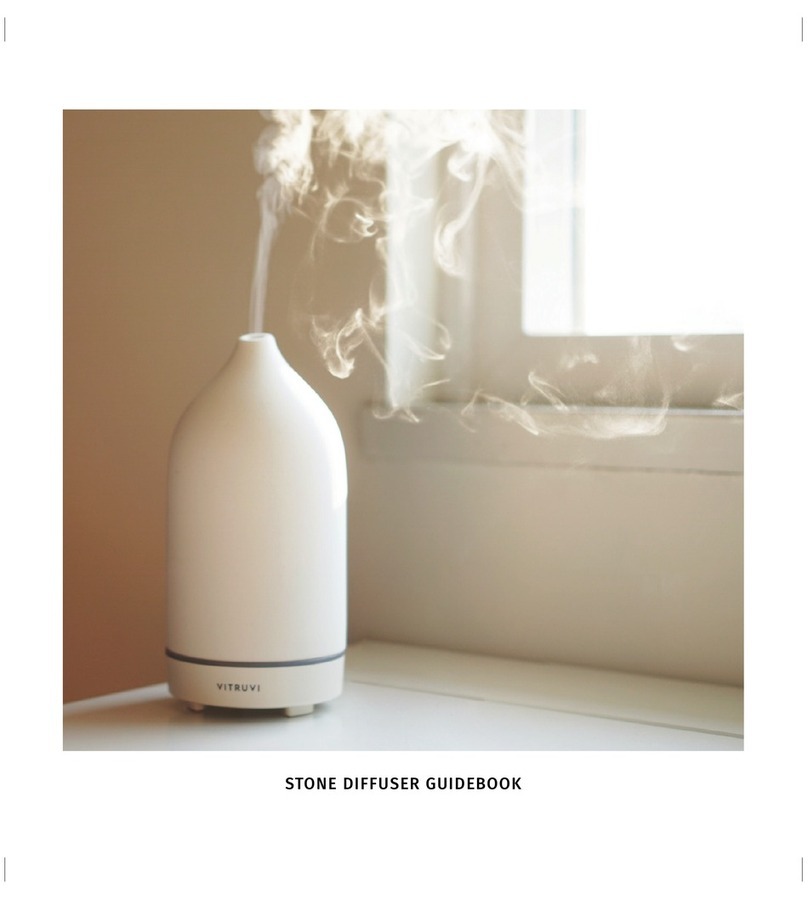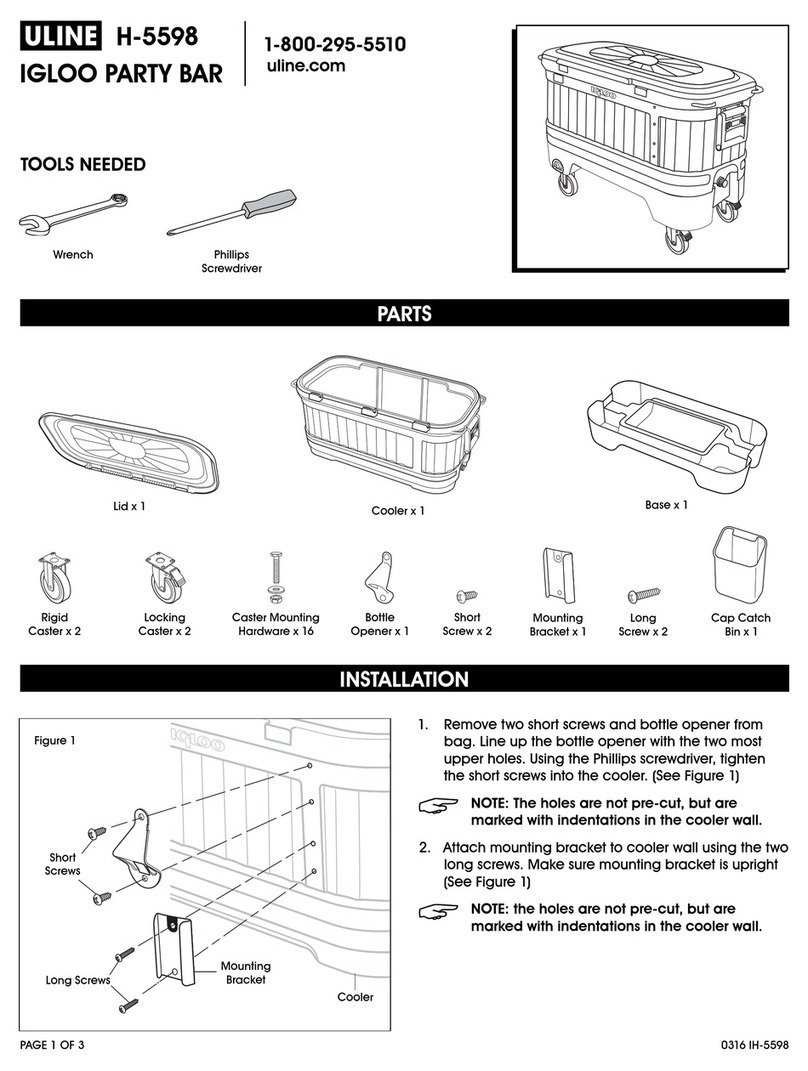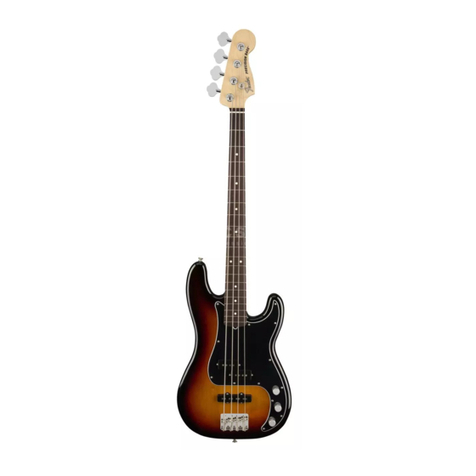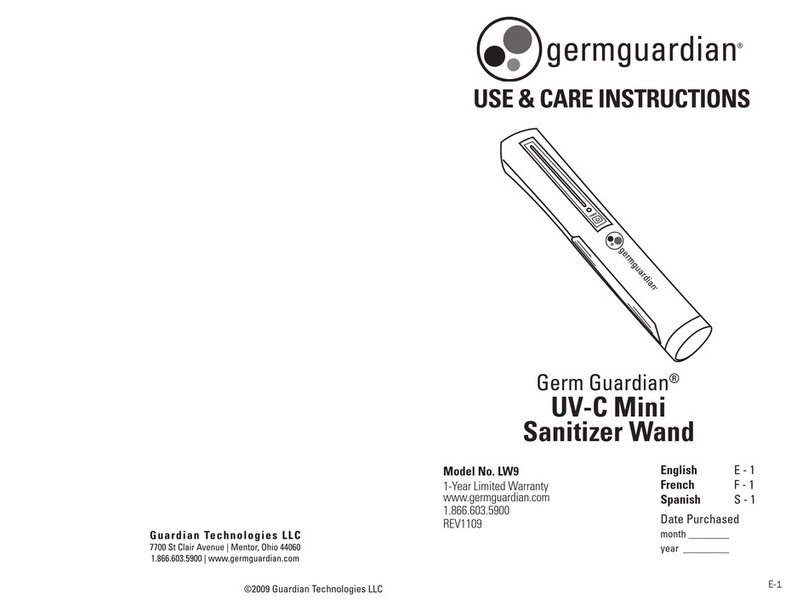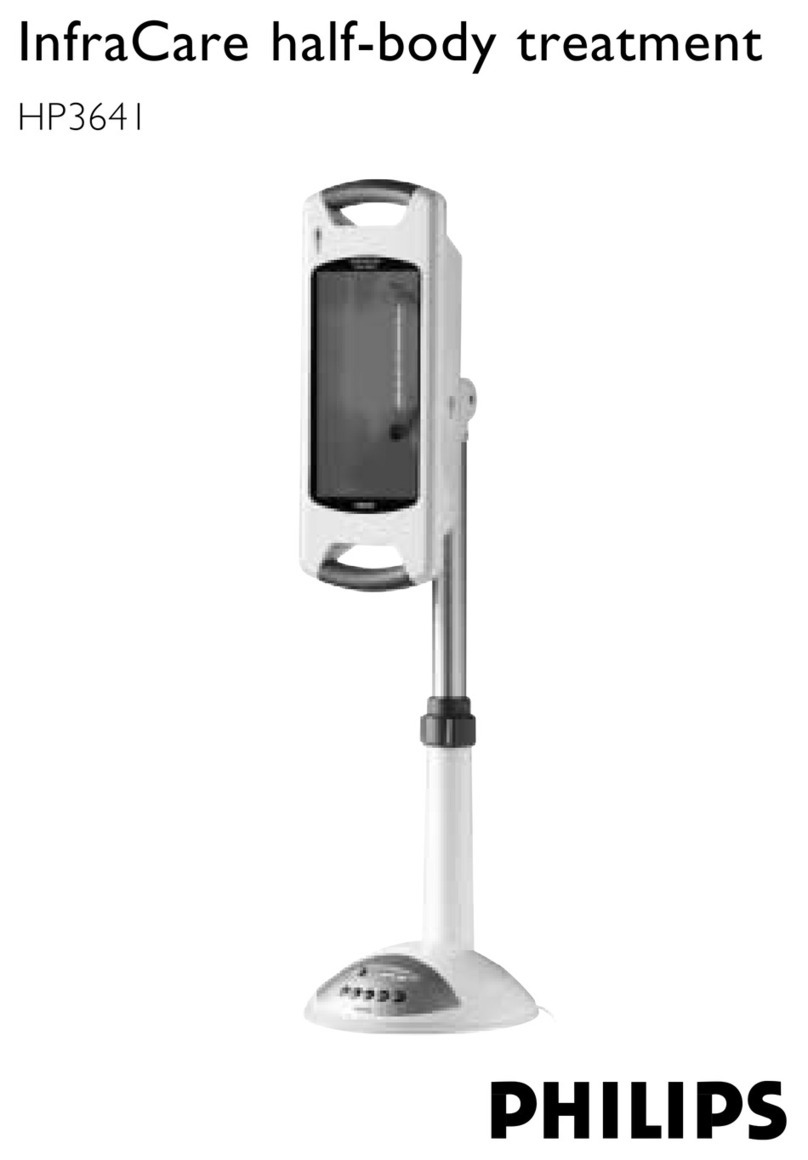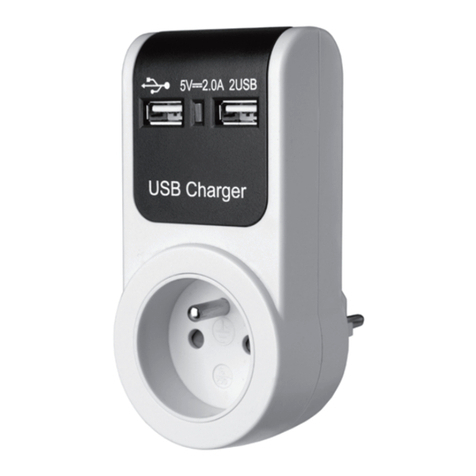
HB Products A/S –
www.hbproducts.dk –
[email protected] – tel.: +4587476
00
Quick guide – HBLC – rev. 001-
01
In order to set the control parameters the HB configuration tool is
needed
echanical specifications:
Ambient temperature: - 0…+50°C
Liquid temperature: -50…+100°C
Max. pressure: 100 bar
Material, mechanical: AISI304/PTFE
Thread connection: see packaging.
Electrical specifications:
Supply: 4 VDC
Current draw: Max 30 mA
Plug: DIN 06 7 – M1 /5 pins
Enclosure: IP65
Material, electronics: Nylon 6 (PA).
Download of software:
The tool can be downloaded for free. Request access to download the
NOTE! To be able to change the control parameters, it is necessary to
have a special USB/M1 configuration cable as well as the
configuration tool installed on a PC.
Installation guide:
It must be mounted vertically.
HBLC can be mounted on an overflow pipe or a pipe segment where
flow and turbulence are minimized.
HBLC can be delivered with cable (HBLC-V) for direct control of a
modulating motor valve, or alternatively without (HBLC-C). It is
supplied with a 5 pin connector cable with an M1 plug.
The HBLC-V can be coupled to any 4 VDC 4- 0 mA modulating valve
For termination to Siemens VS 661 valve:
1) White (GO) = sensor - signal
) Yellow (G) = sensor + signal
3) Grey (Y) = Feedback from the valve
LED activation:
1) Green LED indicates 4 V DC
supply; it blinks during operation. If
"run-in" is not used, this function
must be deactivated in the tool.
) Yellow LED indicates control. The
blink sequence indicates if the valve is closing or opening.
3) Red LED indicates high or low level alarm, depending on
configurations.
Caution! In case of welding work on the unit, the electronic part must
be removed. Welding work can damage the electronics. The
mechanical part of the sensor must not be installed in the pipe socket
during welding.
Note! All terminals are protected against improper termination
with a supply voltage up to 40 V. If the supply voltage is greater
than 40 V the electronics will be damaged.
Caution! Factory settings do not guarantee safe operation, since the
configuration parameters depend on the system design.
Note! Fault detection on the electronic function can be carried out
without releasing pressure from the system or disassembling the
mechanical part of the sensor.
